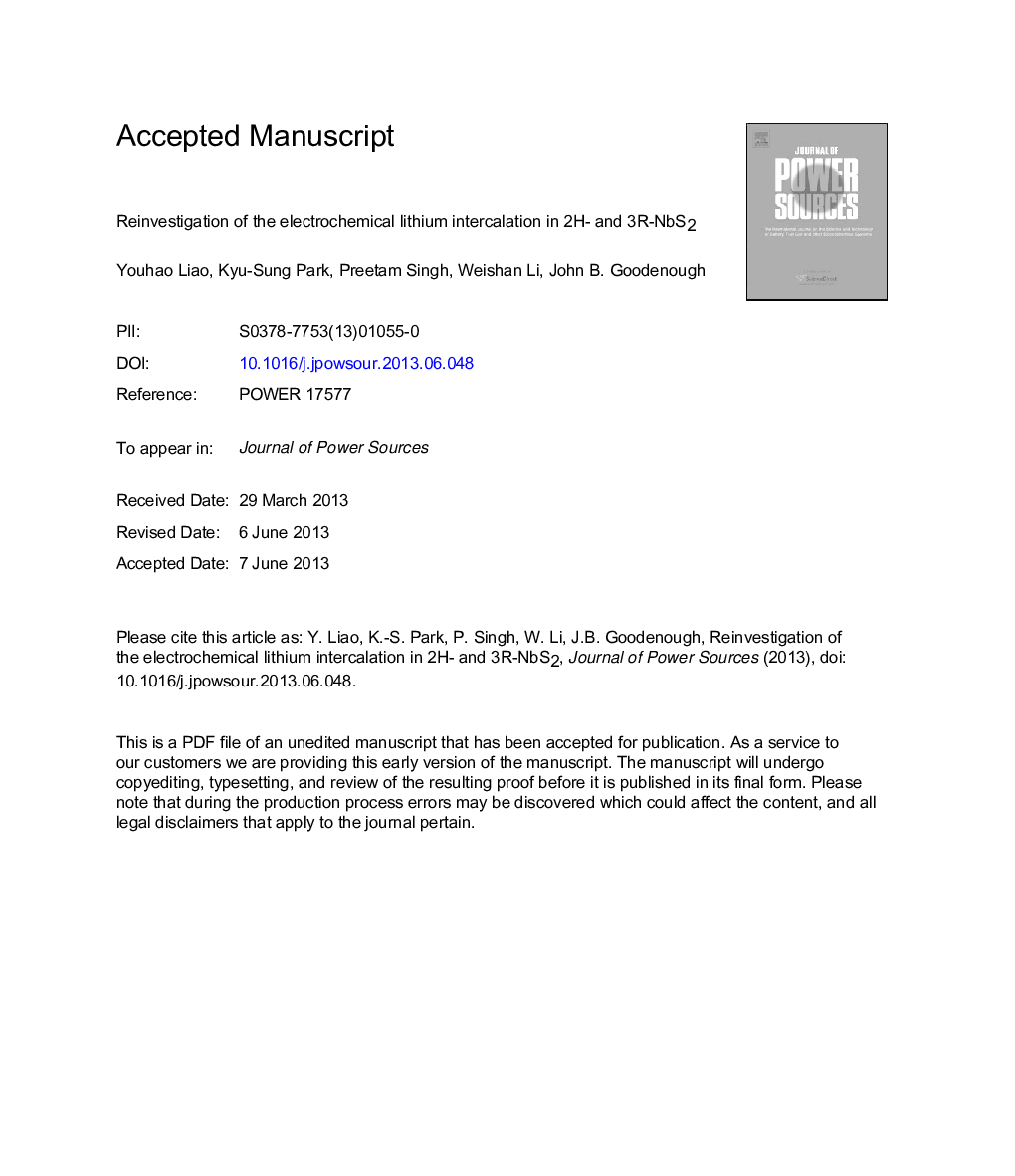| Article ID | Journal | Published Year | Pages | File Type |
|---|---|---|---|---|
| 7739058 | Journal of Power Sources | 2014 | 22 Pages |
Abstract
Layered sulfides, 2H-Li0.7NbS2 (s.g.: P63/mmc) and 3R-NbS2 (s.g: R3m) were synthesized and characterized as electrode materials for a lithium-ion battery. 2H-NbS2 has been known as a poor electrode material for Li+-intercalation. However, both 2H-Li0.7NbS2 and 3R-NbS2 show reversible charge/discharge reactions based on the Nb(IV)/Nb(III) redox couple. They present distinctive differences in the voltage curves as a result of local structural differences. Galvanostatic charge/discharge tests between 1.0 and 3.0 V versus Li showed that discharge capacities were 169.5 mAh gâ1 for 2H-LixNbS2 and 169.0 mAh gâ1 for 3R-LixNbS2 at 0.05 C rate and room temperature. At 10 C rate, 2H-LixNbS2 delivered a discharge capacity of 84.0 mAh gâ1 while 3R-LixNbS2 kept 74.9 mAh gâ1. After 200 cycles at 1 C, 9% of capacity fade was observed for 2H-LixNbS2 (from 141.5 to 129.4 mAh gâ1) and 3R-LixNbS2 showed 14% fade from 139.4 to 120.1 mAh gâ1. The key to improvement of the electrochemical performance of the 2H-LixNbS2 electrode is an initial synthesis of Li0.7NbS2.
Keywords
Related Topics
Physical Sciences and Engineering
Chemistry
Electrochemistry
Authors
Youhao Liao, Kyu-Sung Park, Preetam Singh, Weishan Li, John B. Goodenough,
